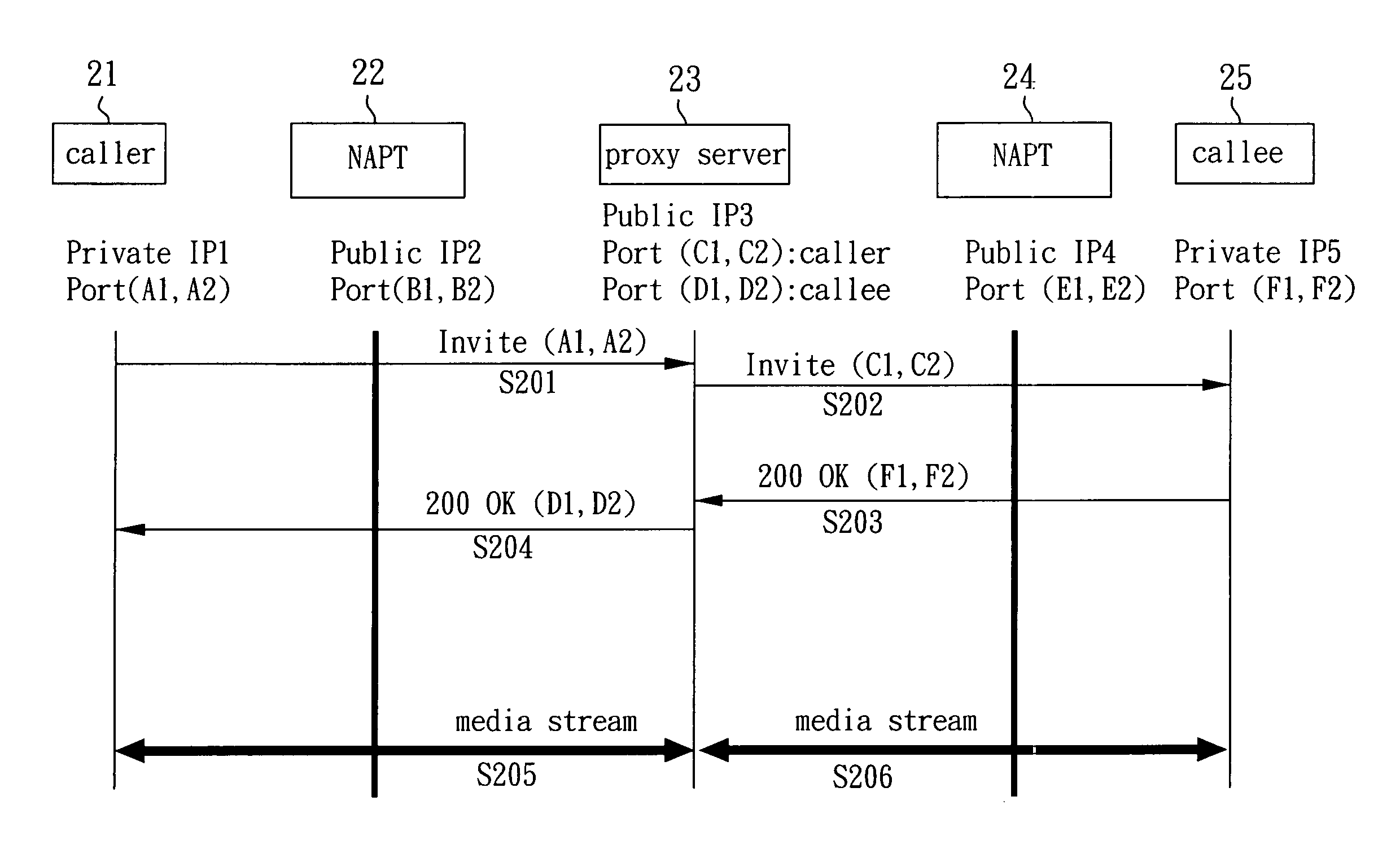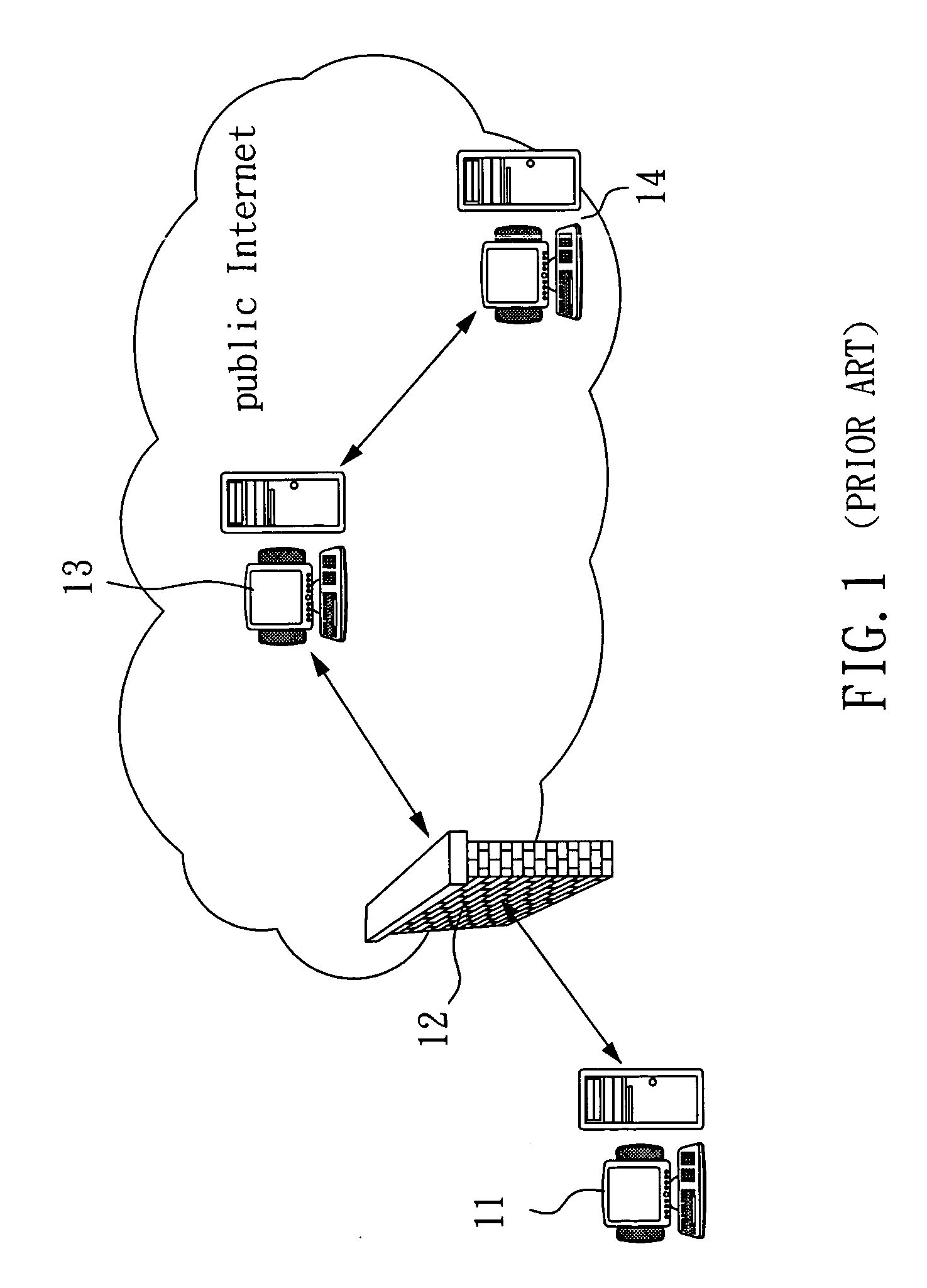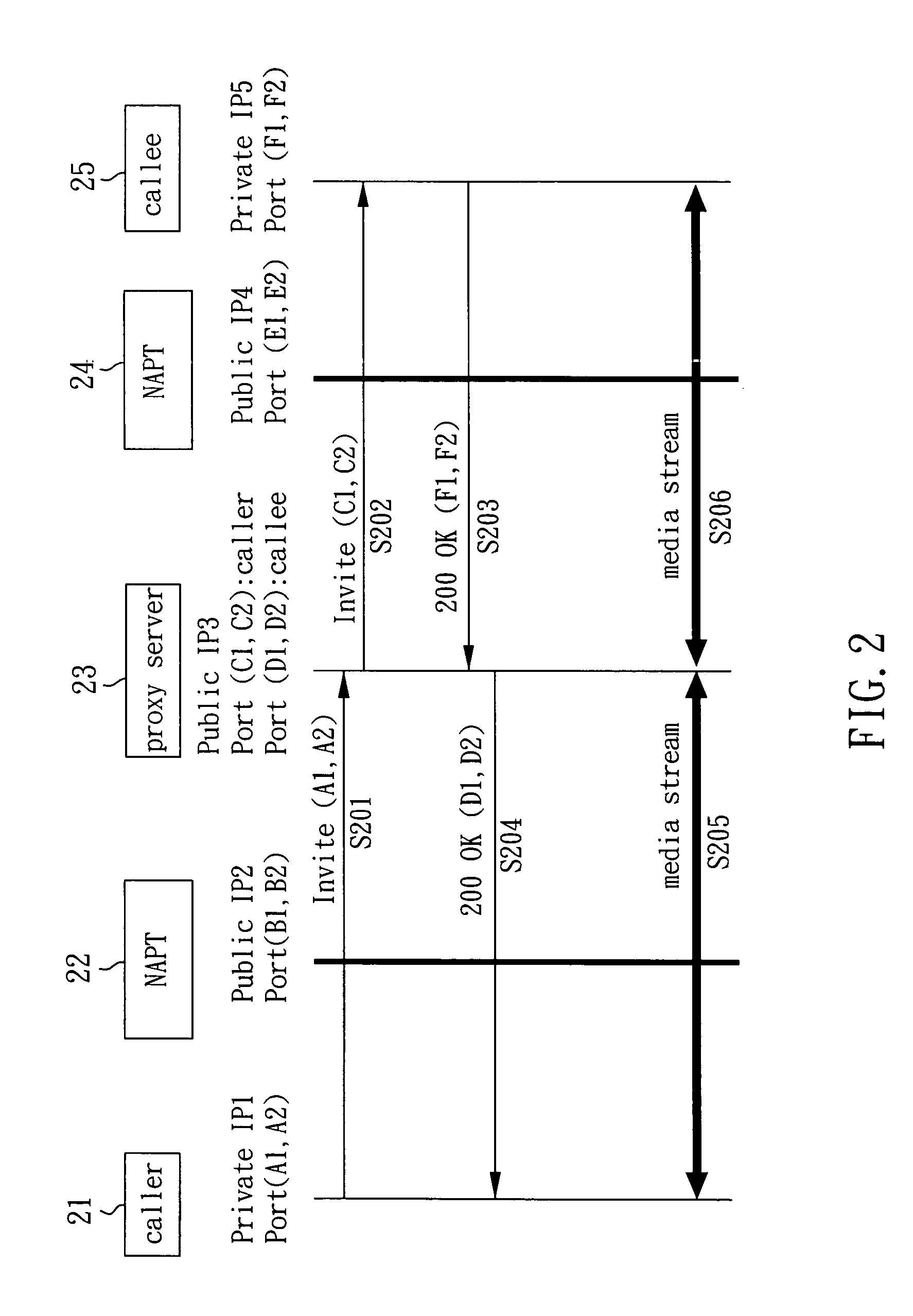Method of reducing media relay of a network address translation apparatus
a network address translation and relay technology, applied in electrical devices, digital transmission, data switching networks, etc., can solve problems such as inability to establish real-time protocol connections, connection failures in networking communications environment, and limited number of public ip addresses, so as to reduce unnecessary communication protocols, reduce media relays, and reduce the loading of transmitting servers
- Summary
- Abstract
- Description
- Claims
- Application Information
AI Technical Summary
Benefits of technology
Problems solved by technology
Method used
Image
Examples
first embodiment
[0014] Please refer to FIG. 2. FIG. 2 is a message flowchart of a first embodiment according to the present invention. A caller 21 and a callee 25 perform a media stream relay via network address port translators 22, 24 and a proxy server 23. The caller 21 sends an ‘invite’ packet to the proxy server 23, wherein the ‘invite’ packet comprises a network address A1 of the caller 21 and a connecting port A2 (step 201).
[0015] Next, the proxy server 23 changes the private network address A1 and the connecting port A2 in the ‘invite’ packet sent by the caller 21 to a public network address C1 and a connecting port C2 of the proxy server 23, and then sends this changed ‘invite’ packet to the callee 25 (step 202). After receiving the ‘invite’ packet, the callee 25 replies with a 200 OK reply message back to the proxy server 23, and sets its private network address F1 and a connecting port F2 in the appropriate fields of the reply message (step 203).
[0016] The proxy server 23 changes the pri...
second embodiment
[0018] Please refer to FIG. 3. FIG. 3 is a message flowchart of a second embodiment according to the present invention. A caller 31 and a callee 35 perform a media stream relay via network address port translators 32, 34 and a proxy server 33. In this embodiment, the proxy server 33 actively sends an ‘invite’ packet to the caller 31 and the callee 35, and sets a public network address E1 and a connecting port E2 of the network address port translator 34 in the ‘invite’ packet that will be sent to the caller 31, and sets a public network address B1 and a connecting port B2 of the network address port translator 32 in the ‘invite’ packet that will be sent to the callee 35 (step 301).
[0019] Next, the caller 31 and the callee 35 respectively reply with a 200 OK reply message to the proxy server 33 to indicate that they have received the ‘invite’ packet (step 302). Afterwards, the caller 31 sends a media stream to the public network address E1 and the connecting port E2 of the network ad...
PUM
 Login to View More
Login to View More Abstract
Description
Claims
Application Information
 Login to View More
Login to View More - R&D
- Intellectual Property
- Life Sciences
- Materials
- Tech Scout
- Unparalleled Data Quality
- Higher Quality Content
- 60% Fewer Hallucinations
Browse by: Latest US Patents, China's latest patents, Technical Efficacy Thesaurus, Application Domain, Technology Topic, Popular Technical Reports.
© 2025 PatSnap. All rights reserved.Legal|Privacy policy|Modern Slavery Act Transparency Statement|Sitemap|About US| Contact US: help@patsnap.com



